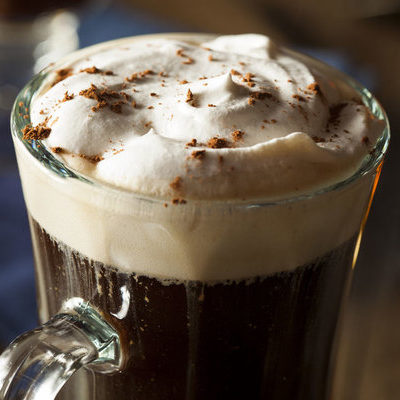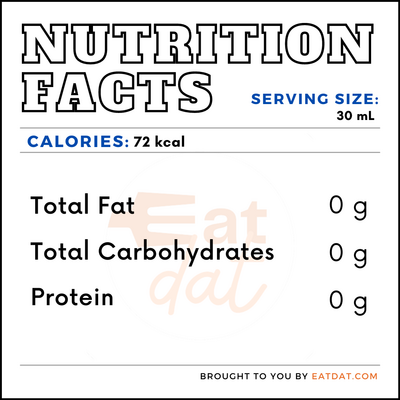
Irish Whiskey
What is Irish Whiskey?
Irish whiskey is one of the tastiest whiskeys in the world today as it has a fruity taste with cereal grain notes. Typically, this drink is triple-distilled from barley blended with grain whiskey. This whiskey is primarily produced on the island of Ireland. Common types include
- blended whiskey
- single malt
- single pot still whiskey
- single grain
The top five most popular brands in the US are:
- The Dead Rabbit
- Tullamore D.E.W. Original
- Redbreast 15 Year
- Bushmills Original
- Jameson
Origin of Irish whiskey
This drink is one of Europe’s earliest distilled beverages. The real origin of Irish whiskey is somewhat subject to debate. Irish missionary monks discovered the skill of distillation during their trips to the Mediterranean in the 11th century, which contributed to the development of the beverage. The first record dates back to 1405. In 1608, the Old Bushmills distillery in Northern Ireland became the world’s first recognized distillery.
By the beginning of the 20th century, this whiskey became very popular in the United States. However, its presence was declined for a while during the 20th century. This was due to its prohibition in the US and the Irish independence war. World War I and II also affected the distribution of this drink to the US and Europe. By the 1980s, its production began to soar again.
Function
This whiskey can be used in many ways in the kitchen. Here are five ways you can include Irish whiskey in your dishes:
- Orange cranachan
- Irish apple tart
- Roast grouse with blackcurrant sauce
- Marmalade & whisky bread & butter pudding
- Bourbon-glazed pork belly chunks
Nutrition
From a 30ml serving of Jameson brand whiskey, the nutritional content is given below:

This drink does not offer any significant nutritional value in terms of carbs, proteins, and fats. Typically, most drinks have an alcohol content of about 40%. Therefore, it is important to drink it in little or moderate quantities. It can offer the following health benefits, if consumed in moderation:
- Speed up weight loss due to its low carbohydrate level.
- It has antioxidant properties that make it capable of fighting cancer.
- It minimizes the risk of stroke.
- Relieves stress because of its sedative properties.
- Treats the common cold.
Just like other alcoholic beverages, this whiskey can have negative effects, if consumed in excess. Some of these effects include:
- Impaired judgment and irrational behavior
- Cirrhosis of the liver
- Long-term addiction
- Damage to the fetus during pregnancy
- Interference with medications like antibiotics and antidepressants
Commercial production
The process of mass production of Irish Whiskey can be summarized in a few steps.
- Milling and malting: The grain is ground into a coarse flour known as grist. The malting procedure involves moistening the grain for some days to trigger a process in which the grain secretes enzymes to convert the starch in the grain into sugar. However, un-malted grain could also be used. Once the malting process starts, it is halted by drying the malted grain in a mostly closed kiln heated by natural gas. The smoke from the heat source must not come in contact with the grain.
- Mashing and fermentation: The grist is then mixed with clear Irish water and heated to around 60° C. This process releases the sugar from the starch present in the grist and forms a sweet soup. After a while, the soup is cooled down, filtered, and drained. A little yeast is mixed with a sugary liquid called wort. The yeast changes the sugar content in the soup to alcohol. After some days, a beer-like substance known as wash will be formed. The wash has an ABV (Alcohol By Volume) of around 8%.
- Distillation: The wash is distilled about two or three times in a copper pot still. The new whiskey spirit will have an ABV of about 85%.
- Storage and maturation: The whiskey spirit is combined with pure water and stored in oak casks. The liquid is left to age for at least three years. However, this time could even be longer depending on the brewer.
- Final dilution and bottling: After at least three years, the whiskey is further diluted with pure Irish water to an ABV percent of 40%. Although this could also be 60% for stronger alcohol content.
Irish whiskey recipes
This drink can be blended with other ingredients to make a nice cocktail. Some wonderful cocktail recipes are:
FDA regulation
The Food and Drug Administration does not have any regulation that relates directly to this. However, the FDA has its regulations concerning the processing, manufacturing, and management of alcoholic beverages. According to the Alcohol and Tobacco Tax and Trade Bureau, Irish whiskey refers to blended or unblended whiskey produced in Northern Ireland, paying regards to their regulations.
References
Stuart, McNamara. “How Irish Whiskey Is Made? A Beginners Guide,” Irishwhiskey.com, Irishwhiskey blog, 5 Apr. 2019, irishwhiskey.com/a-beginners-guide-to-how-irish-whiskey-is-made/.
Callely, John. “A Short History of Irish Whiskey,” thewhiskeywash.com, Thewhiskeywash blog, 15 Mar. 2019, thewhiskeywash.com/whiskey-styles/irish-whiskey/a-short-history-of-irish-whiskey/.
